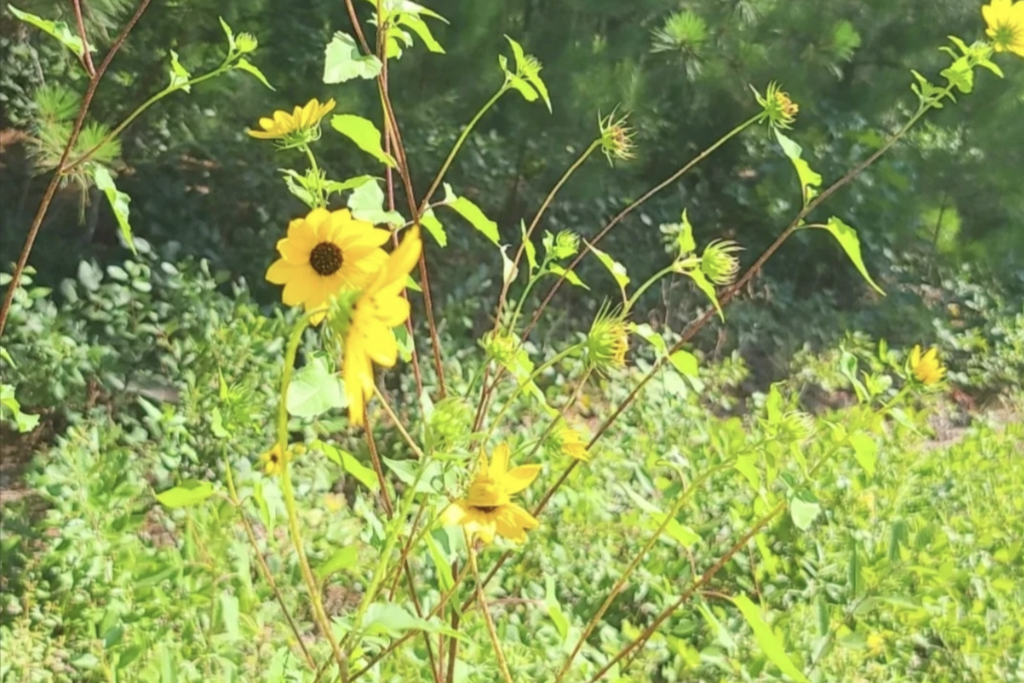The Mammoth Grey Stripe Sunflower, scientifically known as Helianthus annuus, is an awe-inspiring and commanding annual flowering plant that stands out in any garden landscape. As the name suggests, its most defining feature is its colossal size, with some varieties reaching heights of 12 feet or more.


The Mammoth Grey Stripe Sunflower, scientifically known as Helianthus annuus, is an awe-inspiring and commanding annual flowering plant that stands out in any garden landscape. As the name suggests, its most defining feature is its colossal size, with some varieties reaching heights of 12 feet or more. The Mammoth Grey Stripe Sunflower boasts sturdy, thick stems and large, coarse, heart-shaped leaves. Its signature feature is its imposing flower head, which can measure up to a foot in diameter. These flowers are characterized by their rich golden-yellow petals and a prominent brown or greyish central disk. As the flowers mature, the disk can transform into a greyish-black hue, giving this sunflower its name.
Historical Information: Sunflowers have a rich history as they are native to North America and have been cultivated for thousands of years. The Mammoth Grey Stripe Sunflower is a cultivated variety of the common sunflower, prized for its massive size and edible seeds. Sunflowers, in general, have been used by indigenous peoples for their oil-rich seeds and were later introduced to European gardens, becoming a symbol of light and warmth. The genus name, Helianthus, is derived from the Greek words “helios,” meaning sun, and “anthos,” meaning flower.
Fun Facts:
Edible Seeds: The seeds of the Mammoth Grey Stripe Sunflower are not only enjoyable for birds but are also a favorite among humans. They are commonly used for snacking, in salads, and for oil extraction.
Natural Sunflower Oil: Sunflower seeds are a primary source of sunflower oil, a popular cooking oil known for its light flavor and high smoke point.
Materials and Steps to Grow Mammoth Grey Stripe Sunflowers from Seeds:
Materials Needed:
Steps:
Seed Selection: Choose healthy Mammoth Grey Stripe Sunflower seeds from a reputable source. The seeds are typically large and easy to handle.
Container or Garden Plot: Determine whether you will grow the sunflowers in containers or in a garden plot. Keep in mind that these sunflowers need plenty of space and should be planted at least 2-3 feet apart.
Soil Preparation: Sunflowers thrive in well-draining soil. Whether in containers or in the ground, prepare the soil by adding compost or organic matter to enrich it.
Planting: Plant the sunflower seeds about 1 inch deep in the soil, placing them about 6 inches apart. Water the soil thoroughly after planting.
Location: Mammoth Grey Stripe Sunflowers require full sun, so choose a spot in your garden that receives at least 6-8 hours of direct sunlight per day.
Watering: Keep the soil consistently moist but not waterlogged. Water at the base of the plant to avoid wetting the foliage.
Support (Optional): As the sunflowers grow tall and heavy, you may need to provide support in the form of stakes or trellises to prevent them from bending or falling over.
Fertilizing (optional): Fertilize the sunflowers with a balanced, all-purpose fertilizer if your soil lacks nutrients. Follow the manufacturer’s recommendations for application.
Uses: Mammoth Grey Stripe Sunflowers serve various purposes in the garden and beyond:
Mammoth Grey Stripe Sunflowers are primarily grown for their ornamental and culinary uses and are not typically associated with medicinal properties. However, sunflower seeds, in general, are a good source of nutrients, including vitamin E, magnesium, and healthy fats, which can be part of a balanced diet. Always consume sunflower seeds in moderation, as they are calorie-dense.